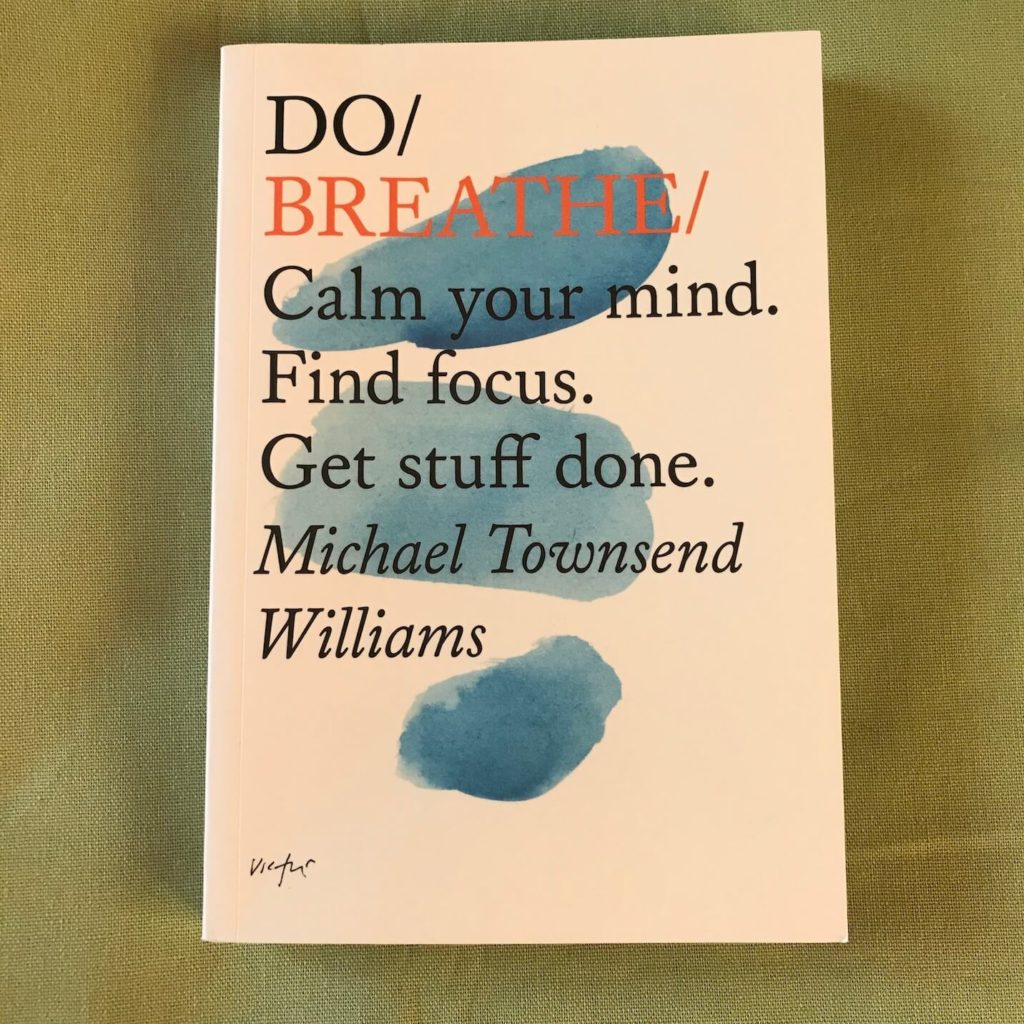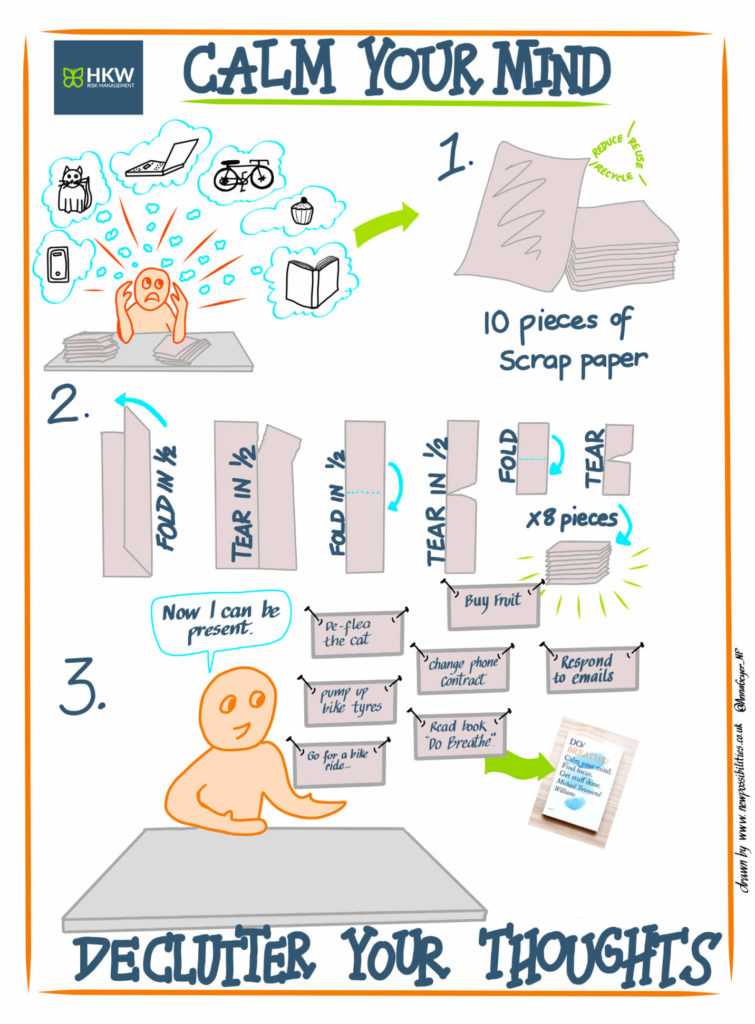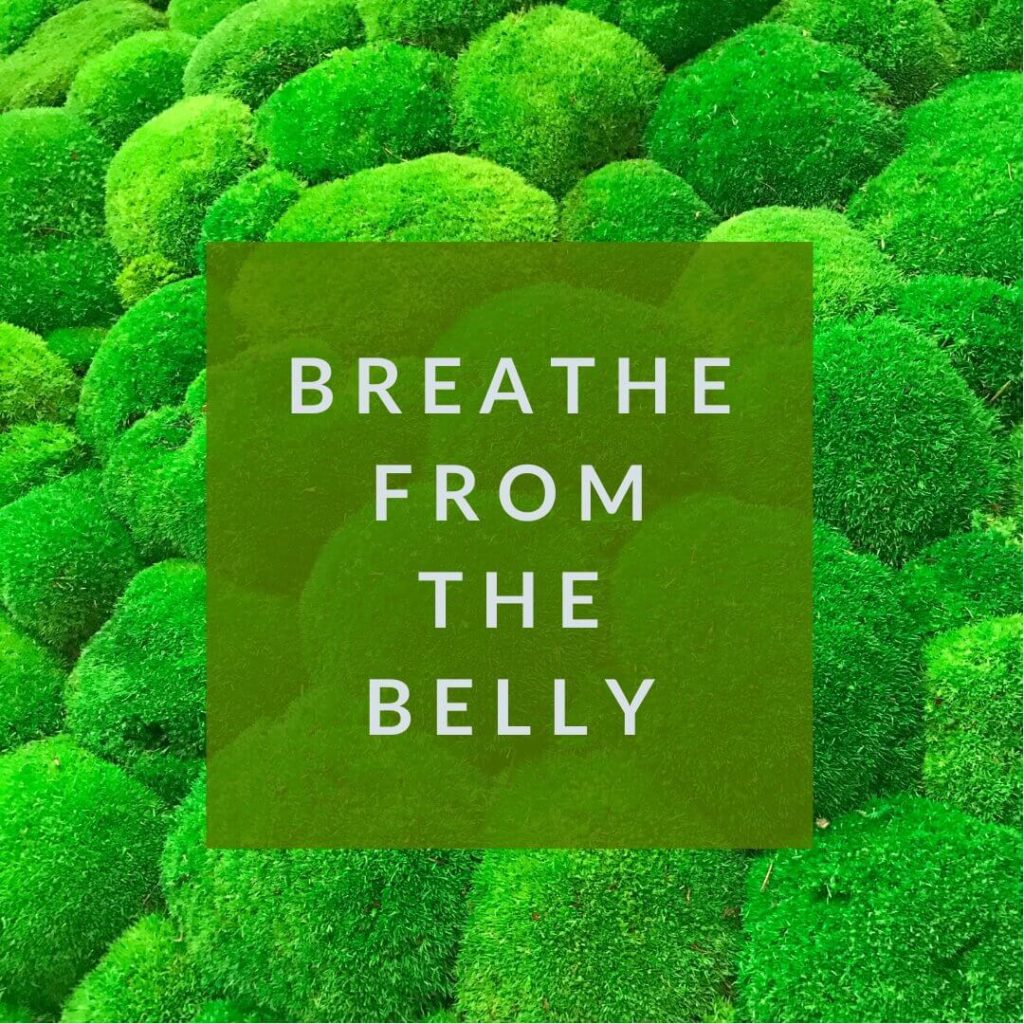

Did you know that the average person takes approximately 20,000 breaths a day? A process so automatic that we barely give it a passing thought and yet is it so vital:
“Our breath is perhaps the greatest connector of all. It connects us to our planet, when we breathe out, plants breathe in.”
The quality of our breath has a significant impact on our health and our productivity, and the Do Breathe book neatly and simply illustrates the connection between the two with the tag line “Calm your mind. Find Focus, Get Stuff Done.” I have always felt that there is a conflict between being relaxed / mindful / calm versus achieving things that need to be done and this book neatly describes this conundrum as well as providing some practical solutions to both breathing better and being more organised. As the book says, “the only solution to us being disorganised is getting organised!”
I was lucky enough to attend the Do Breathe course (organised by Do Lectures) with Michael Townsend Williams in February 2020 (back in those days when catching a train to London and attending a course in a room full of people seemed like a normal thing to do!) and I have returned to the book regularly since. The three main things I learnt from both the course and the book are:
- How to breathe better
- How to de-clutter my mind
- How to organise things better
Breathe
The key breathing techniques which I learnt on the course and are emphasised in the book are the following three things which are very easy techniques to learn (and to remember), for me the key is being aware of my breath and focusing on these throughout the day:
- Breath in and out of your belly
- Breath in and out through your nose
- Breathe out a little bit more than you breathe in
De-clutter
This ‘de-cluttering your mind’ exercise has been a gamechanger for me – I have always loved a list and the satisfaction of crossing things off, but have obviously never reached the end and somehow, there is always more you can add.
With a traditional list, it often ends up a mixture of the urgent (finish that client project), the mundane (go to post office) and the aspirational (start playing the piano again) and if I don’t write down the aspirational, the issues lurk and pop up at random or frustrating moments. This de-clutter your mind exercise helps free up mental capacity to focus on what needs to be done now, but with the reassurance that nothing has been forgotten. On the course, we each had a small notebook in our goodie bag and as Michael read out a list of topics (Family, Hobbies, Pets, Finances, Projects, Networking, Things to read etc) we were instructed to write one thing down on each page as it came to mind – I was horrified to discover I’d written down over 100 things which had been previously floating around in my brain! Then we were told to tear them all out, categorise them and start doing them – there is usually something you can achieve in 2 minutes or less somewhere in the pile.
I use this technique with my clients – particularly before a strategy session when I want people to be free to think rather than having their cognitive load already occupied with the things they are worried about forgetting so I worked with Anna Geyer from New Possibilities to illustrate this process. As I felt environmentally guilty about using a new notebook, I came up with a way to use scrap paper instead. I now use this technique regularly and once I’ve captured all my thoughts, it makes organising them into piles, doing the urgent ones and filing the rest for future action much easier. It is also immensely satisfying screwing up the small pieces of paper and throwing them in the recycling bin when I’ve achieved something!

Organise
Michael has developed a simpler version of the ‘Getting Things Done’ technique and has a straightforward framework to getting more organised and productive – you just need to CARE about what you do:
- Collect
- Arrange
- Reflect
- Execute
The key action I have taken away from the Reflect stage is having a weekly meeting with myself – I actually have a standard agenda and a tick list to make sure I’ve worked through each stage, which I appreciate may not suit everyone (!) but it does make sure I’ve followed Michael’s process in a way that suits me. I have found this book full of straightforward ways to breathe better, feel calmer and be more productive and would highly recommend it!


